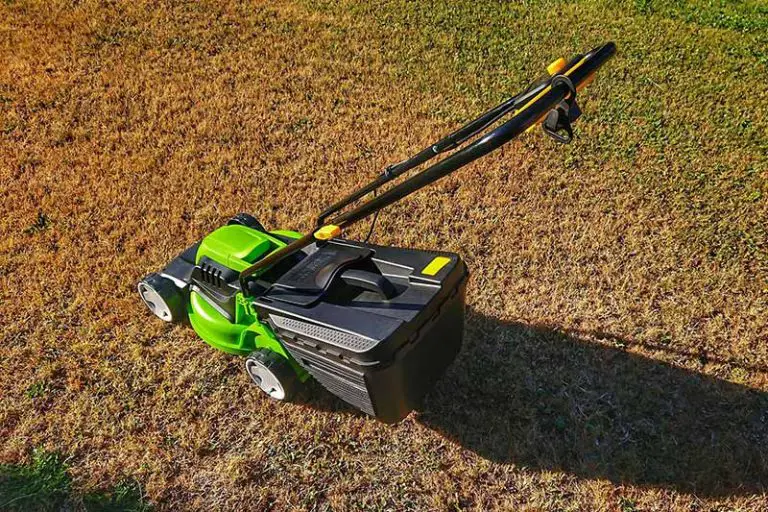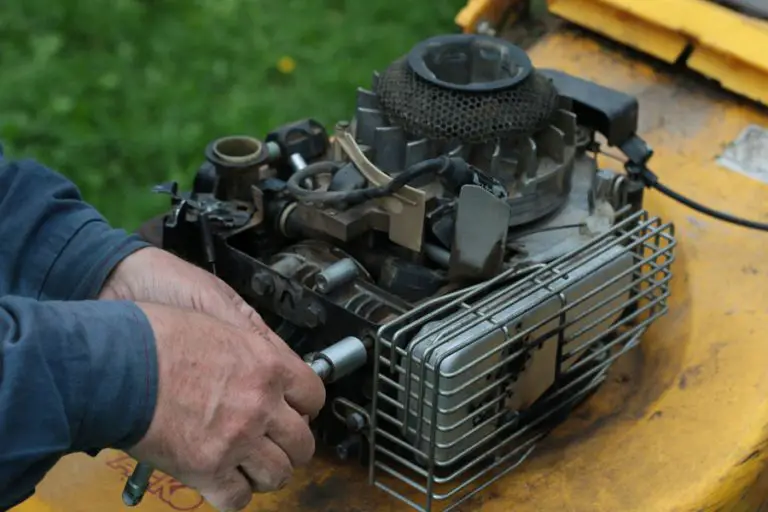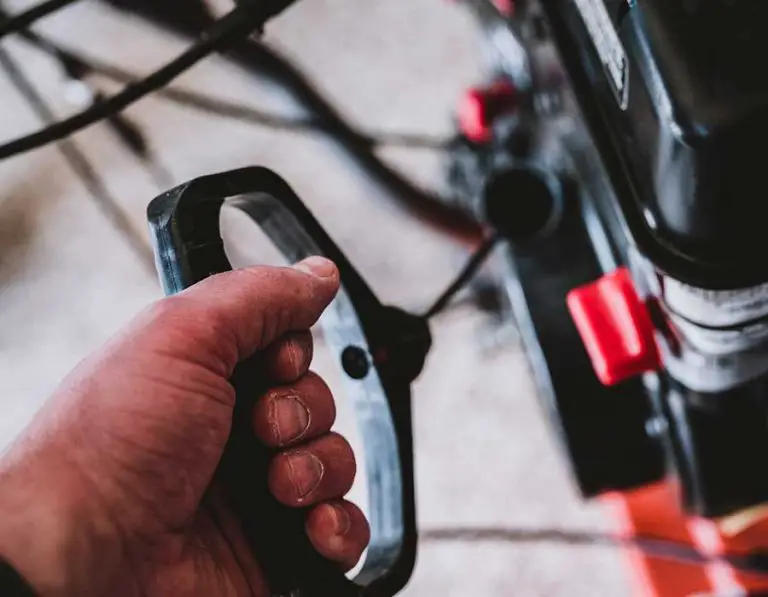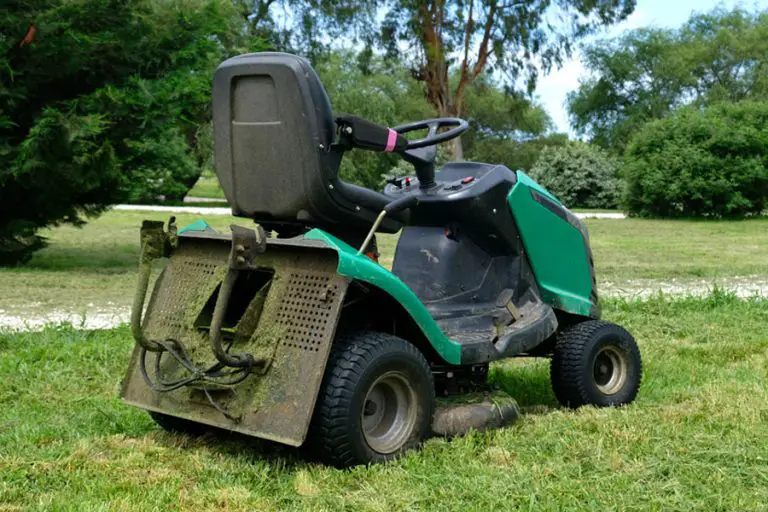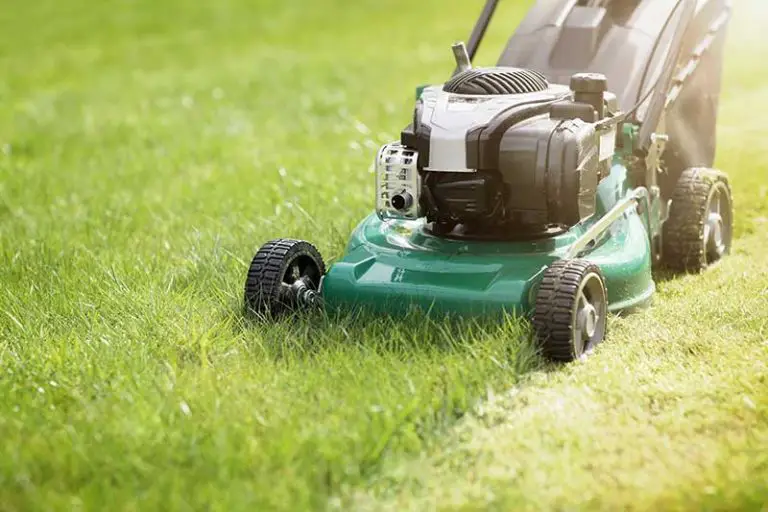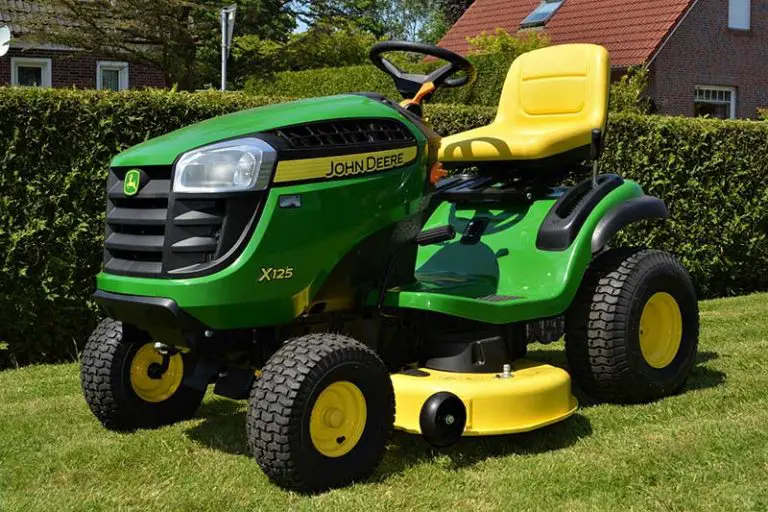Lawn Mower Smoking: Reasons Why & How To Fix Them
It can be an alarming sight when you fire up your mower and instead of running smoothly, it starts billowing smoke – especially if it starts sputtering and stalling too. While it’s understandable that your immediate reaction may be to panic, very often the source of a smoking lawn mower or engine is an innocuous issue that will go away on its own or with a simple DIY fix.
When assessing the severity of a smoking lawn mower, the clue is in the color of the smoke. In the majority of cases, a lawn mower smoking white or blue smoke will stop producing the smoke on its own after you let it run for a few minutes. However, if the smoke continues to billow out of your mower and you notice other telltale signs that the mower’s engine isn’t running the way that it should, you may need to address the issue yourself or have it repaired by professionals. A lawn mower smoking black smoke is also a cause for concern and indicates there’s an issue with the inner workings of your mower.
Read on to learn more about the different causes of a lawn mower smoking white, blue, or black smoke, along with step-by-step guides on how to fix each issue at the source.
Before following these troubleshooting tips, make sure you’re using the right technique to start your lawn mower by referring to our guide: How to Start a Lawn Mower.
Why is My Lawn Mower Smoking White Smoke?
Oil Spilled on the Engine
Mower oil spilled onto the engine can be a cause of the lawn mower smoking white smoke. If you notice your mower smoking after adding oil, you may have accidentally spilled some of the oil onto the engine’s housing. Oil may also inadvertently spill onto the engine if you’ve been mowing on a slope steeper than 15 degrees, or if you’ve tipped the mower onto its side for any reason.
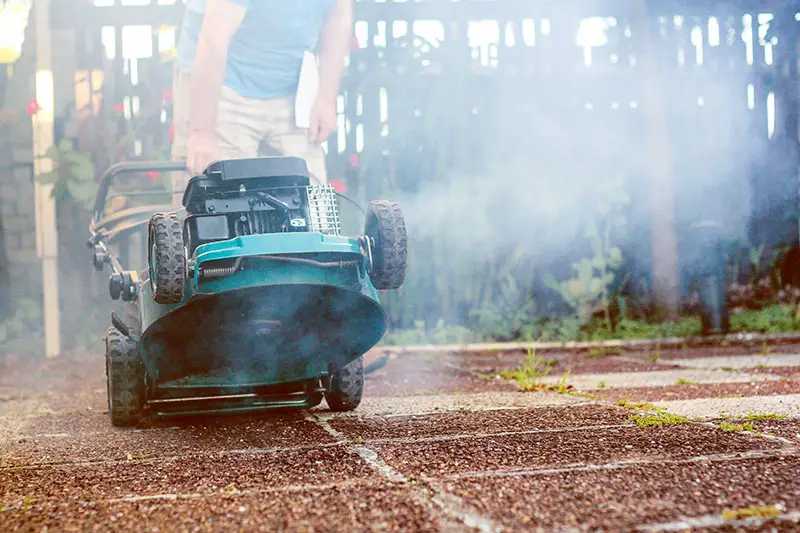
How to Fix an Oil Spill on the Mower’s Engine
The smoke may appear alarming, but this issue is relatively minor and is easily fixed using the steps below.
1. Restart mower’s engine
Simply restart the mower’s engine and allow the spilled oil to burn off.
2. Wait until white smoke stops
If the white smoke doesn’t completely dissipate after about 15 minutes of running the mower, it’s an indication that there may be a bigger issue that needs to be addressed. If this is the case, see the following sections where we have gone through the next steps you should take towards identifying and solving other potential causes.
Oil in the Fuel of a 4 Stroke Mower
If you don’t own a 4 stroke mower then you can skip this section. In the case that you do have a 4 stroke mower, it may be smoking white smoke due to oil mixing in with its fuel. Many up-to-date lawn mower models come with a 4 stroke engine, as they are more reliable and tend to have a longer lifespan than 2 stroke engines do. Not only are they more reliable, 4 stroke engines require less maintenance than their 2 stroke counterparts, and don’t require oil to be mixed in with its fuel. If you put fuel that has been mixed with oil into a 4 stroke mower engine, then the mower will burn the oil which causes it to smoke white smoke. If you continue to run the engine of a 4 stroke mower when there’s engine oil in the fuel tank, it may lead to the engine becoming damaged and prematurely worn out.
How to Remove Oily Fuel from a 4 Stroke Mower
You should take care to avoid draining the fuel out of the mower by tipping it, as this can cause engine oil to spill into the carburetor or cylinder.
1. Find fuel line
Locate the fuel line, which is the part that exits the fuel tank responsible for feeding fuel into the mower’s engine.
2. Remove fuel line
Undo the clip on the fuel tank that’s holding the fuel line in place and pull the fuel line off. Alternatively, you could follow the fuel line to where the shut-off valve is located and remove the line at the point at which it connects with the valve. The shut-off valve is a small switch that enables the user to control the flow of fuel to the engine, and is easy to spot around the base of the fuel tank. Be aware that when you complete this step, fuel will start pouring out of the tank.
3. Drain fuel from fuel tank and collect it in appropriate container
After you remove the fuel line, fuel will start pouring from the fuel tank. Use an appropriate container such as a metal pan to collect it and prevent it from spilling everywhere. Spilt gasoline is not only a nuisance, but also a serious fire hazard, so make sure to clean up any liquid that you don’t manage to contain.
4. Drain fuel from carburetor
As you drain the fuel from the fuel tank, find the carburetor on your mower to drain the fuel from it as well. Underneath the carburetor you will find the carburetor bowl, which has a small screw or nut located on the side or bottom of the bowl that can be tweaked to empty it out. Loosen the screw or nut and allow the fuel to drain out of the carburetor into your container.
5. Wash fuel tank if necessary
This step is unnecessary if you can’t see any oil stuck to the inside of the mower’s fuel tank. If you do, then you will need to remove the tank from the mower completely and give it a deeper clean with dishwashing liquid. Pour dishwashing liquid into the fuel tank and give it a good shake to remove the oil from the inside of the tank. You can then clean the carburetor using a can of carburetor cleaner.
Overfilled Oil Reservoir
If your lawn mower is leaking oil and smoking white smoke, you may have accidentally overfilled the crankcase. Lawn mowers suffer from having too much oil as much as they do from having too little. An excess of oil in the reservoir can spill into the engine’s cylinder and start burning with the fuel, which can cause white smoke to come from the mower’s exhaust and oil to start leaking from the muffler. Excess oil in the mower can also leak onto the housing of the engine, which causes the mower to smoke white smoke when the engine heats up and burns it off. In addition to creating the white smoke, the excess oil may also drown the mower’s crankset, impeding its motion. If the mower’s engine won’t start, or takes a much longer time than normal to start and you find that it’s difficult to idle it, these are telltale signs that the combustion chamber is burning oil.
How to Fix & Prevent an Overfilled Oil Reservoir
It varies between models, but generally speaking, lawn mowers take just over a pound of oil. This isn’t very much, which is why it’s common to accidentally overfill the oil reservoir. Check the manual for your mower to find out the exact recommended amount of oil for your model.
1. Check current level of oil
Use the dipstick to check whether the oil level is within the indicated amount marked on the stick. If it shows that there’s an excess amount of oil in the engine, follow the next steps to fix it. You may need to seek the help of professionals if the oil is present in unmanageable amounts.
2. Drain excess oil
Remove the excess oil by draining it out of the engine. Tilt the lawn mower onto its side so that the carburetor is facing upwards in order to prevent oil from spilling into the combustion chamber. Let the oil run out of the mower into an appropriate container, and clean up any oil that spills onto other parts of the mower. Dispose of the excess oil appropriately. Finally, change the oil filter.
3. Check new level of oil is adequate
Use the dipstick to ensure that the new level of oil is within the recommended amount. Run the mower and wait until the white smoke dies down. If it doesn’t, refer to the next section.
Damaged or Leaking Head Gasket
If neither of the previous two issues are the source of the white smoke coming from your mower, then it could be due to a damaged or leaking head gasket. The head gasket is a seal that functions to keep the engine closed off, and is found in the area of the mower where the cylinder joins with the rest of the engine. When this part of your mower fails to seal the cylinder head properly, it can cause oil to leak from the crankcase into the cylinder. As there is a lot of compression in the cylinder to pull oil from the crankcase, any small crack in the gasket will cause oil to be sucked into the combustion chamber. The oil will start burning as it enters the cylinder, and will cause the mower’s engine to produce clouds of white smoke. If the engine is left running, it will only cause the mower to produce increasing amounts of smoke as more oil is sucked through the damaged gasket into the combustion chamber. In addition to your lawn mower smoking white smoke from its exhaust, you will be able to hear the air that’s blowing from the faulty gasket, and you will notice a reduction in compression which can cause the mower to have a low power output. If there is a large amount of oil flowing into the cylinder, it may cause the mower to die after a few minutes of use or prevent it from starting at all.
How to Replace a Damaged or Leaking Gasket
Only Overhead Valve (OHV) engines have gaskets, so make sure your mower definitely has an OHV engine before taking it apart. Examine the head gasket for signs of damage, such as oil around or under the gasket and on the body of the mower. If the head gasket does appear to be damaged, it will need to be replaced as these parts aren’t repairable once they’re damaged. They are inexpensive so you’ll be able to purchase a good quality replacement for a relatively small amount of money. You can DIY and replace the head gasket following the steps below.
1. Remove spark plug wire and cylinder head bolts
First, remove the spark plug wire, then use a socket to remove the bolts holding the cylinder head onto the engine block.
2. Remove damaged gasket
The gasket is found where the cylinder head connects with the engine block. Remove the old damaged gasket. Use a tool to scrape off any remaining spots of hard-to-remove parts of the gasket, but take care not to scratch the smooth surface when scraping off the leftover debris.
3. Install new gasket
Take the new gasket and place it on the engine block, then replace the cylinder head before bolting the gasket onto it. Reinstate the spark plug wire onto the spark plug.
Damaged Piston Rings
The worst culprit of all that may be causing your lawn mower to smoke white smoke is a damaged or worn out piston ring. Piston rings are responsible for controlling the flow of engine oil within the mower, supplying small amounts of oil to the piston to enable it to move smoothly within the cylinder. The piston rings in your mower also work to expel excess oil out of the combustion chamber and to channel it back into the engine block. When the piston rings fail to work properly, engine oil is able to enter the combustion chamber where it gets burnt up, which is what then causes the mower to smoke white smoke. This is an issue commonly seen in older and worn out lawn mowers, or in mowers that have been poorly maintained. Piston rings can become damaged through a number of different ways, but one of the most common causes is if the mower has a dirty or worn out air filter that has allowed dust and debris to enter the combustion chamber where it has managed to damage the piston rings. Another extremely common cause of piston ring damage is if the engine oil hasn’t been changed on time or has become dirty, as this results in poor lubrication and wears out the piston rings. In addition to the white smoke, your mower will run with little to no power, and will burn through a lot more oil than it should need.
How to Fix a Damaged Piston Ring
Unfortunately, fixing a damaged piston ring is a complicated job that requires the engine to be opened up and rebuilt entirely. If the piston rings in your mower are damaged, it’s likely that the head cylinder will also be damaged to some extent and will need to be replaced too. You would need specialized tools and a lot of experience to carry out this type of repair, so unless you are a lawn mower expert, it’s probably best to seek the help of a professional repair shop instead of trying to DIY it. Alternatively, you can just replace the whole engine, which is probably the best option at this point as rebuilt engines tend not to work as well as new ones.
Why is My Lawn Mower Smoking Blue Smoke?
For the most part, a lawn mower smoking blue smoke is likely to be suffering from one of the issues known to cause white smoke – read through the previous sections to find out more about the potential causes of blue or white smoke. Other possible reasons why your lawn mower is smoking blue smoke can be due to the use of the wrong oil grade, or if you have over-tilted the lawn mower when mowing on a slope.
Why is My Lawn Mower Smoking Black Smoke?
Dirty or Worn Out Air Filter
Dirty or worn out air filters are a common cause of lawn mowers smoking black smoke. The air filter in your mower ensures that the air flowing to mix with the gas is clean and free of contaminants such as dirt, dust, and leaves, which would potentially damage the mower’s engine. When the air filter becomes dirty or worn out over time, airflow is restricted and the combustion mix becomes too gas-rich due to the reduced amounts of oxygen. This can cause black smoke to pour out of the mower’s muffler, and may also cause the mower engine to stall after a few minutes of use.
How to Clean an Air Filter
We’ve provided some rough guidance below on how to clean an air filter, but you can refer to your mower’s manual to know the exact instructions for your model. If the filter is severely clogged, it may be easier to just replace the part entirely.
1. Clean light dirt with compressed air
As air filters are made from a sturdy and porous material, you can use a can of compressed air like the Innovera Compressed Air Cleaner to clean out light amounts of dirt.
2. Clean heavy dirt with lukewarm water water and dish soap
If the air filter is severely clogged and needs more of a deep clean, you can remove it completely from the mower and hand wash it. Fill a bowl with lukewarm water and dish soap, and remove as much of the debris as possible. Let the filter air dry and then replace it in the lawn mower.
3. Run the engine and check for smoke
Run your mower’s engine for a few minutes and check if it’s still smoking any black smoke. If it is, then the issue may lie with the carburetor instead. See the next section for more information on this.
Malfunctioning Carburetor
If your air filter isn’t the problem, then the next source of the issue could be with your mower’s carburetor. The carburetor and other parts of the fuel system work together to mix oxygen and gas in the right ratio to create combustion, which in turn regulates the flow of fuel to the crankshaft that powers the lawn mower’s engine. When airflow to the carburetor is restricted, the fuel mixture becomes too rich in gas, and this can cause the mower to smoke black smoke from its muffler. Other signs of a malfunctioning carburetor in a lawn mower include the mower’s engine stalling during use or failing to start at all, the engine running roughly during use, and the mower consuming more fuel than usual.
How to Clean a Carburetor
Find the carburetor located on the side of the mower, behind the air filter and on the opposite side to the muffler, and inspect it. If the carburetor appears damaged or worn-out, you may need to replace the part entirely. If it’s just a case of a blocked or dirty carburetor, you can follow the steps below to remove the blockage and get it functioning properly again. If neither of these things seem to be the issue, it may be necessary to adjust the carburetor to increase airflow.
1. Remove carburetor bowl and its screws from mower
Use a plug wrench to loosen the screws holding the carburetor bowl in place, and remove them along with the bowl from the mower.
2. Clean carburetor bowl, hole and screws
Purchase an aerosol carburetor cleaner and use it to clean away any debris or residue from the carburetor bowl and screws. Aerosol carburetor cleaners are cans of pressurized air specially designed to clean carburetors, and some brands come with directional nozzles that help get into the harder-to-reach corners of the part – this Carb and Choke Cleaner from Gumout will do the trick. To remove any blockages, use a thin piece of wire or a nylon cleaning brush to clean out the hole that sits underneath the carburetor – we like to use the wire needles in this Cleaning Tool Kit to break through any tough debris.
3. Replace the carburetor bowl and screws
Take your plug wrench again and use it to reattach the carburetor bowl and its screws. Take care not to over-tighten the screws when replacing the bowl as this may distort the seal.

